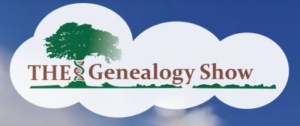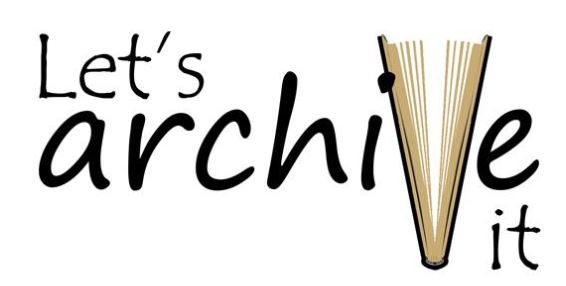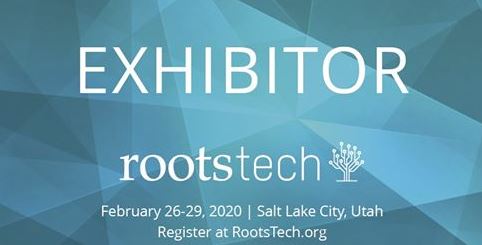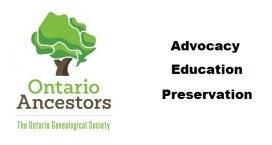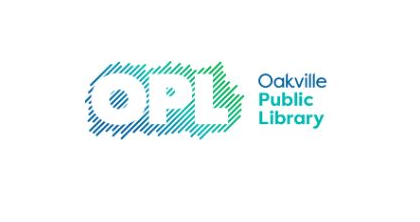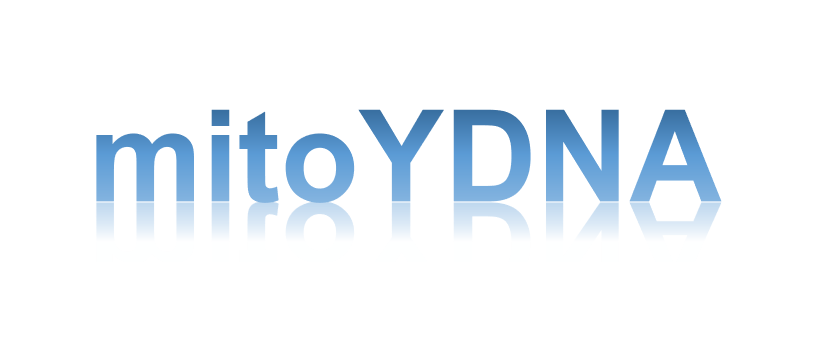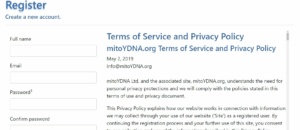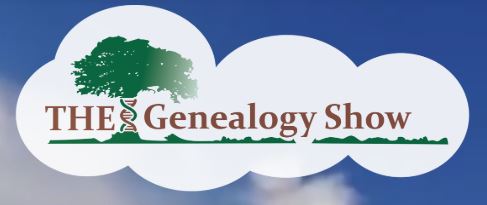Tag: family history
Roots Tech 2020
Mags will be at Roots Tech this year. Mainly hanging out at the WikiTree booth – #1311. Mags will also be helping with the mitYDNA.org booth – #1842.
Interesting Booth Talks Schedule
Wednesday:
9:30 AM – Ballroom B, Quickly finding common ancestors through DNA (Rob Warthen) – Regular session
6pm – WikiTree – Sarah Rojas (WikiTree Basics)
6:30 – FTDNA – Y-DNA & Advanced Y-DNA (Gale French)
Thursday:
10:40 – WikiTree – The Basics (Sarah Rojas)
10:35 – FTDNA – DNA Databases (Mags Gaulden)
11:00 – Speaker Area – Meet the Tool Makers (Rob Warthen, Jonny Perl)
12:05 – WikiTree – The Single Global Family Tree (Mags Gaulden)
1:00 – WikiTree – The Honor Code (Julie Ricketts)
2:20 – Roots Tech Demo Stage – What’s new with WikiTree (Mags Gaulden)
2:35 – FTDNA – Y-DNA & Advanced Y-DNA (Gale French)
2:40 – WikiTree – G2G (Kitty Smith)
4:05 – FTDNA – Common Ancestors using Collins Leeds Method (Rob Warthen)
4:10 – WikiTree – DNA Features (Peter Roberts)
5:40 – WikiTree – Our Community (Katie Goodwin)
Friday:
10:40 – WikiTree – The Basics (Sarah Rojas)
12:05 – WikiTree – The Single Global Family Tree (Mags Gaulden)
1:00 – WikiTree – The Honor Code (Julie Ricketts)
2:40 – WikiTree – Adding Your First Leaf (and where to go from there) (Kitty Smith)
3:45 – WikiTree – Incorporating 52 Ancestors Stories Into WikiTree (Roberta Estes)
5:40 – WikiTree – Name Studies (Mags Gaulden)
Saturday:
11:00 – 4:05 – FTDNA – Common Ancestors using Collins Leeds Method (Rob Warthen)
Ontario Ancestors Webinar – DNA Databases
February Webinar – Mags Gaulden
February 6, 2020 07:00 PM
Topic: DNA Databases
DNA databases, what are they? How do they work? Who runs them? What’s in the TOS/Privacy (Terms of Service/Privacy)? How to you use DNA Databases in your research? Answering these questions for every level of Genealogists.
The Good of DNA and genealogy.
The good of DNA and genealogy. DNA and Genealogy set me up for a very interesting , humbling and fulfilling weekend in Hamilton, Ontario
Hamilton Ontario and Union Station Platform 9 3/4
As a fan of Hamilton, Ontario, where I have had the pleasure of speaking, twice, in a month, or so I am happy to say, I now know how to get there. I’ll be back in Hamilton in June at the Ontario Ancestors (OGS) 2020 Conference. I am very much looking forward to it and I have solved a HUGE transportation issue.
Taking the train to Toronto, one must change at Union Station to the Go Transit Bus system. It’s a bit awkward in union station, but I have nailed it. Go to the York Concourse, and take the elevator, very near the entrance from the great hall, up to level 3, to the GO Train platform. Take a left out of the elevator then walk to the very end of the platform.
Push yourself and your luggage cart through the wall, taking care to not hurt your owl. Wait…
At the end of the platform you can take the stairs or go around the corner to the left and take the elevator down to the bus platform. Got it? Good, so far, so now your travel to Hamilton from Union Station Toronto will be less stressful (no there are no trains to Hamilton).
BUT…there’s more! Once you get into Hamilton you can take your bus all the way down to the Bus Station, about a half km walk, to the hotel across from the convention centre entrance (The Sheraton Hamilton Central). Or you can get off on Main St. in front of the cool Hamilton sign, near King St. West, walk across the street, down and around the corner to the entrance of the convention centre/hotel. Google Maps, Pshaw.
Leaving is so hard to do! Not really. The bus stop to get back to Toronto’s Union Station is right outside the entrance to the Honest Lawyer (it’s a bar/adult arcade not a real honest lawyer) across from the entrance to the convention centre and next to the hotel. Or if you are into health in June, in Canada, then walk yourself back the half km to the bus station.
Thank you, and shout out, to the Hamilton Public Library for throwing such a great Genealogy Fair. What a great turnout! What a great space! What friendly volunteers/event staff. Loved being so well cared for, throughout!
Ontario Ancestors! Thank you for sponsoring my contribution to the day. I can’t imagine having more fun at work than I do, you made my weekend.
My lecture? The audience was full, attentive, and engaged. We had fun learning about DNA!
Here are some Photo’s.
Big Thing #1
The two biggest things that happened during the day? As soon as I arrived, I was helped with my booth/table setup by my neighbors, the Hamilton Branch of the UEL, thanks Martha and Pat. No, that isn’t a big thing, to you. Martha is the big thing (sorry Pat). I didn’t remember her name on the first go. She and Pat immediately created nametags for themselves. Upon reading Martha’s name? I really shouldn’t give her privacy away, but suffice it to say that her nametag included one of my surnames. One that I have not researched (I don’t have time to work on my own family!!!) Now I have started a name/place study to figure out how we are connected. Bad Martha!
Big Thing #2
The other big thing? This is a really big thing. It’s about how the power of DNA can give us a sense of self, of identity.
A Lady who has attended my lectures in the past came by my booth before lunch. She was with a “friend” and they started confusing the heck out of me trying to get me to help them with the last nudge their research needed to tell them who their Earliest Known Shared Ancestor is.
I finally had to get them to spoon feed me the names dates and places so I could start drawing out a chart I create for all of my clients (for me). It is based on the Maguire Method of looking at diagraming shared matches. The chart let’s me see how close family members are related and their level of relatedness. I referenced Blaine Bettinger’s Shared cM tool at DNA Painter, to help with the cousin/familial relationships and added those relationships to my McGuire Method chart.
After getting all the data down in a rough sketch we all three (more me than them) could easily visualize the familial connections and immediately we saw something was wrong in the family story. These were first cousins, these two ladies, but the amount of shared cM’s pointed to something dark and sinister about the birth of one of the lady’s Mothers.
This mother had been adopted. The other lady, who was a part of the first lady’s birth family, had accessed a family journal entry from a cousin, which stated that an aunt had gone away to Michigan and became pregnant while she was there. Once she was home and nine months later? A baby girl was born. The baby girl was shuffled off to live with an Aunt out west and all was good and a happy ending for the baby was guaranteed.
But the numbers were off. We talked of endogamy and could endogamy have anything to do with how things were lining up? It certainly looked like it, especially after looking at the high number of high cM matches that turned up in the match list.
The ladies, cousins, were throwing out three different father names from my sketch. How could this fella be, or this fella? It was all wrong and nothing really pointed to any of the men. Then, I ran David Pike’s ‘Runs of Homozygosity (ROH)’ utility at GEDmatch (click on “Are Your Parents Related” in the right hand column of your GEDmatch home page) on the adoptee’s kit at GEDmatch.
“Since you inherit half of your DNA from each of your parents, it stands to reason that large blocks of SNPs where both alleles are the same would be an indication that your parents each inherited that block from the same ancestor. These are called ‘Runs of Homozygosity’ (ROH). There are other utilities available that look for ROH for other purposes, but this analysis is specifically aimed at determining how closely related your parents might be.” – David Pike’s ‘Runs of Homozygosity (ROH)’ utility GEDmatch.
Running the analysis took a second, which seemed like and hour…
David’s utility pointed us to the right man. Still a member of the family, but not a possible 1st cousin to the mother. The ladies were a bit worried that, that would be the case. It was still not a nice story for them, though. It appears that they share a common grandfather. That this man had had an affair with his wife’s sister, a baby was born, though not shipped off to the far away sister, but put up for adoption close by. It certainly isn’t the happy ending from the journal. But a happy ending none the less. Two cousins discovered together, who they were; one morning at their local library’s genealogy fair.
Oh, the power of DNA and the tools our community has put together for us to use, free of charge to make these kinds of discoveries. This is the kind of story I like to see about DNA databases and the genealogy community.
Grandma’s Genes in Oakville!
Grandma’s Genes in Oakville!
Wednesday, October 09
6:30pm – 8:30pm
I’ll be dropping by the Oakville Library Genealogy meetup on October 9th.
“Whether you’re new to genealogy or an experienced researcher, come learn in this informal seminar setting.
Here’s a chance to ask and answer questions about your genealogical research from your fellow family historians and get some tips and tricks!
Thinking of stopping by? Register in advance to ensure a seat!
Brought to you in partnership with Ontario Ancestors (OGS) and the Oakville Public Library.”- Oakville Public Library Event
It sounds like fun!
WikiTree Source-A-Thon
I will be one of many WikiTreer’s losing sleep the first weekend of October during the WikiTree Source-A-Thon.
Instead of writing a new blog post to tout that I will be appearing on source-a-thons hangouts (I will), or that I am offering a one hour consult as one of the prizes (I am), I am posting the press release for you from WikiTree! Enjoy…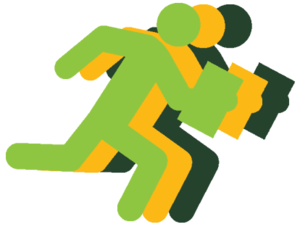
WikiTree Announces Fourth Source-a-Thon
Wiki genealogists celebrate Family History Month by verifying oral family histories with sources
September 4, 2019: Registration opened today for WikiTree’s fourth annual “Source-a-Thon,” a 72-hour genealogical sourcing marathon. The event is scheduled for the first weekend in Family History Month (October), starting on the morning of Friday, October 4, and ending on the morning of Monday, October 7.
Family trees often start as oral histories.
Events are retold as they are remembered by those who experienced them. These memories are incorporated into family trees and handed down through the generations. The genealogists who collaborate on WikiTree seek to preserve these family histories forever as part of a single family tree that everyone can access for free.
Unfortunately, oral histories and handed-down trees sometimes include mistakes. Conflicts arise when the trees are put together into a single family tree. The only objective way to resolve these conflicts is to refer to original source documents, such as birth, marriage, and death records.
Family History Month Marathon
To celebrate Family History Month, WikiTree members from all over the world will be working together around the clock for three days on profiles that don’t currently have any source citations.
This is the fourth annual marathon event. Of the 2018 Source-a-Thon, participant Neil Perry wrote, “I have to say, I really enjoyed it, and the fact that over 72,000 new sources were added to the tree is amazing! … everyone’s a winner.”
Prizes
To support this event, individuals and organizations from around the genealogy community are donating prizes to be awarded at random. Over $3,500 in prizes have been donated so far, including DNA tests and full memberships from MyHeritage and Ancestry, as well as valuable prizes from Fold3, Newspapers.com, Legacy Tree Genealogists, Family ChartMasters, RootsTech, Grandma’s Genes, and more. Prizes are still being added. If you would like to donate a prize, contact eowyn@nullwikitree.com.
To be eligible for the random prize drawings, participants must register in advance and get a “race number.” Registration is now open. See https://www.wikitree.com/wiki/
WikiTree, The Free Family Tree
WikiTree: The Free Family Tree has been growing since 2008. Community members privately collaborate with close family members on modern family history and publicly collaborate with other genealogists on deep ancestry. Since all the private and public profiles are connected on the same system this process is helping to grow a single, worldwide family tree that will eventually connect us all and thereby make it free and easy for anyone to discover their roots. See https://www.WikiTree.com.
FGS 2019 Conference Takeaways
I spent the last 6 days in sweltering, melting, sauna like, Washington DC in the comfort of the luxurious Omni Shorham at the FGS Conference 2019. Here are my takeaways…
The Venue
The Luxurious Omni Shoreham, was spectacular in architeture, hospitality and location at Woodley park. The proximity to Woodley Park was a must have since the hotels restaurants and bars (under new management?) seemed woefully unprepared for this flock of genealogists.
Since I spent the majority of my time in the exhibit hall talking about mitoYDNA, WikiTree, DNAGedcom and Genetic.Family, I can only speak first hand about how well the exhibit hall worked. Second hand I can say that everyone I talked to who attended sessions mentioned they learned a great deal and were being spurred on by the sessions to dig deeper and work smarter on thier genealogy.
The Exhibit Hall itself presented challenges for the organizers, yet those challenges did not translate to anything but a great experience for our booth. Our biggest challenge was very poor lighting which was over come by the generosity of the exhibitors close to us – Thank you Mary Kay from Our Fun Tree and Angie and Louise from The National Institute For Genealogical Studies.
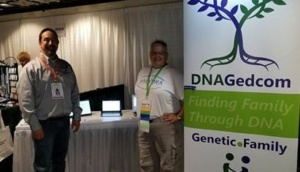
Randy Whited worked tirelessly to make sure the exhibitors had what they needed and was in the hall, I think, for the entire conference. Thank You to Randy for being very present.
The volunteers and conference organizers were also very presnt. Thank you to the FGS board, Pat Richley-Erickson, Steve Fulton, Jen Baldwin and the rest for your hard work to make things work for all attendees.
Support for mitoYDNA.org
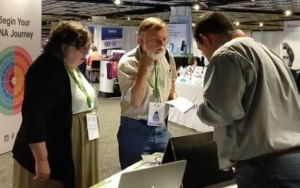
Rob Warthen and DNAGedcom hosted mitoYDNA at the DNAGedcom booth and at the conference. Which is a pretty big deal. Really a big deal to have that kind of support for a brand new, non-profit (run totally on contributions and support from the genealogy community) organization. Thank You!
mitoYDNA took the opportunity afforded us to introduce the Genealogy Community to this new, free, accessible YDNA and mtDNA database. It was our first public appearance since swinging open our doors for uploads, matching and analysis.
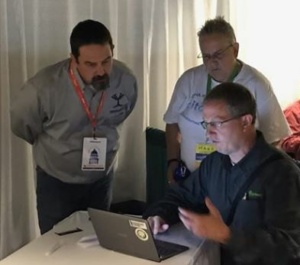
We had great conversations about privacy and our philosphy of making this database availabe to everyone while still being able to provide privacy to our users as well. We talked about how Y and mtDNA can be used to smash brickwalls. We talked about how acedemic researchers can use the data to show how we are all connected.
We geeked out with people who came to us with ideas for tools and analysis for the database. I am talking serious Geeking going on at all hours.
FGS Conference 2019 was a great first public appearance for mitoYDNA and the support and good words we got from so many was incredible!
WikiTree In The House (or I am home where ever I am)
The very first person I saw upon arriving at the conference was WikiTreer Star Kline! We both screamed each other’s names when we saw each other and hugged it out – it was our first time seeing each other in the real world (as opposed to the virtual world of WikiTree). What a great welcome!
WikiTreers stopped to say hello everywhere. Even in the ladies room! Some made multiple trips by the booth to ask questions or just to be “WikiTree” at the conference.
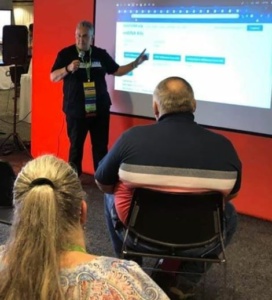
FTDNA graciously asked me to do a booth session/talk and WikiTreer’s came out in force to see my WikiTree infused presentation on mitoYDNA.
As I was getting into my uber to leave for home, WikiTreer Glenn York came over to see me off (and to tell me we are double cousins!). WikiTree is always home where ever I go!
Some Statistics
Here are some interesting numbers from FGS 2019:
mitoYDNA had 25 to 30 new site visitors each day of the conference.
We added approximately 240+/- kits to the mitoYDNA Database.
I talked to every single society who were exhibitors at the conference and to quite a few who were not official exhibitors, which was the goal of mitoYDNA being at the conference. Societies who have promised to mention the mitoYDNA is open and avialable? 100+/-
There is no hard number for the number of WikiTreer’s who are re-engergied about working our great big ole shared tree at Wikitree, nor are there numbers on new WikiTreers, but there certainly are (I know this because I had people coming by to ask me questions about their first profile work).
People who were sent to the FTDNA booth for Y and mtDNA upgrades? 10 – 12 (million, he he).
People who were sent to YSEQ for Y and mtDNA tests? No numbers on that but a few at least.
South Carolina Peeps in attendance? I think half the conference were my fellow Carolinians! Loved getting to meet new friends and to see old friends from “down home” – especially the contingent from SCGS who were like light for this Carolinian-Canadian moth. Can’t wait to see you again next July for the 2020 SCGS 48th Annual Summer Workshop, July 10-11.
Granma’s Genes Hugs given away? Way too many to count!
mitoYDNA, THE new Y-DNA and mtDNA Database
mitoYDNA, THE new Y-DNA and mtDNA Database is here. What is mitoYDNA? How can it help the genealogy community? And many more questions, answered.
What is a Y-DNA and mitochondrial DNA database and why do we need it?
Y-DNA – is the DNA for males that follows the patrilineal line back, father to son, for a very long time – thousands of years.
mitochondrial DNA (mtDNA) – is the DNA that follows the matrilineal line back, mother to her children, which is passed on by only her female children to their children, for a very long time – thousands of years.
For years anyone who tested their Y-DNA and mtDNA could post their results to the databases YSearch and MitoSearch to do comparisons, matching and analysis. If you had a Y-DNA or a mtDNA test you could compare and match with people from various DNA testing companies. GDPR (General Data Protection Regulation) caused FTDNA to make the decision to close these two databases – time and money to get each and every person in the former databases up to the new privacy standards was too expensive and time consuming to attempt.
How and why did mitoYDNA get started?
I spoke with FTDNA in 2017 about YSearch and mitoSearch and its future since there were lots of rumors floating around regarding it’s possible closure. I was told that indeed the sites would be closing.
As someone who uses DNA daily in my own business, and having used YSearch and MitoSearch for my own family mysteries – especially using mitochondrial DNA to solve an adoption mystery (or tale of adoption) in my own family – I knew firsthand how important having a free and accessible Y-DNA and mtDNA database was to my research. I know how important a third-party Y and mtDNA database is to DNA researchers in the genealogical community.
Over the course of 2017, a team came together to build and create mitoYDNA.org.
Our Mission
mitoYDNA.org is a website for uploading Y-DNA and mitochondrial DNA to create a YDNA and mitochondrial DNA database. The site also offers DNA matching, analysis and tools to help our users/volunteers further their genealogical research. mitoYDNA is:
- Crowdsourced – www.mitoYDNA.org is volunteer driven.
- Free – www.mitoYDNA.org’s use will be at no cost to the users/volunteers, though donations are encouraged to defer hardware, facility and administrative costs.
- Accessible – www.mitoYDNA.org will be accessible to all.
501(c)3 non-profit company
mitoYDNA Ltd., the 501(c)3 non-profit company behind the design, implementation, and ongoing upgrade and maintenance of mitoYDNA.org, is a group of collaborative genetic genealogists who believe genealogists can have access to a YDNA and mtDNA database which includes Y and mtDNA testing from all available companies today and those of the future. mitoYDNA Ltd. is based on the principles genealogical collaboration and continues to work to keep mitoYDNA:
- Straightforward
- Current
- Expanding
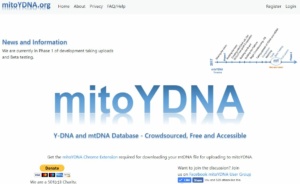
Registration
Using the menu bar for navigation, click on Register.
Fill in all of the fields (password help is listed below the password fields) and be sure to read the TOS/Privacy Statement and click the checkbox at the bottom of the page to verify you have read them – they are very important.
Once you have registered “Kits” and “Tools” will be added to the navigation menu at the top of the page.
Create
Click Kits on the Menu Bar and it will take you to the Kits You Manage Page. From there click on the create button to create a kit.  When you create a kit, you will download your results in a CSV file for YDNA, from your testing company to your computer then upload it to mitoYDNA. For mtDNA you will download a chrome extension (for Google Chrome) which will download your mtDNA results from your testing company to your computer then you can upload it to mitoYDNA. For more on how to download your Y-DNA and mtDNA and upload to mitoYDNA please visit our FAQ/Help page.
When you create a kit, you will download your results in a CSV file for YDNA, from your testing company to your computer then upload it to mitoYDNA. For mtDNA you will download a chrome extension (for Google Chrome) which will download your mtDNA results from your testing company to your computer then you can upload it to mitoYDNA. For more on how to download your Y-DNA and mtDNA and upload to mitoYDNA please visit our FAQ/Help page.
What Files does mitoYDNA take?
The Y-DNA files are the Short Tandem Repeat (STR) marker values (alelles) and represent your Haplotype (the set of DNA alelle values; not to be confused with Haplogroup) . mitoYDNA does not process Single Nucleotide Polymorphisms (SNPs) data!
Data Processed
The chart below shows the current status of data processing capability for each company at mitoYDNA. Click on the Company name to get instructions on how to get the files you need to upload to mitoYDNA (if currently processed). Abbreviations:
- CSV – Comma Separated Values
- Ch. Ext. – Chrome Extension
|
Company – Help File |
mtDNA | Y-DNA | ||||
|---|---|---|---|---|---|---|
| FASTA CSV | HVR1/2 CSV | Ch.Ext. | Manual | CSV | Manual | |
| FamilyTreeDNA | ★ | ★ | ★ | |||
| Ancestry | ★ | ★ | ★ | |||
| YSEQ | ★ | ★ | ||||
| Sorenson | ||||||
| Genebase | ||||||
| Oxford | ||||||
| NatGeo | ||||||
WikiTree Integration
mitoYDNA ID’s appear in WikiTree and can be used to view comparisons on mitoYDNA.
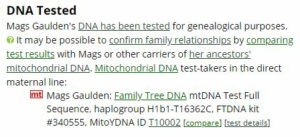
Instructions for Y-DNA and WikiTree
Instructions for mtDNA and WikiTree
Full Launch
We rolled-out all the tools, matching and comparisons we have planned for phase I of mitoYDNA.org and are ending a very successful beta testing run.
Since we are crowdsourced, we are getting suggestions and input from our facebook users group about the future of mitoYDNA.
Have fun, join the conversation and let us know if you need help, either in the Facebook Users Group, or via info at mitoYDNA.org.
Merrickville and District Historical Society – AGM
Mags will be presenting a nuts and bolts genetic genealogy talk, The Power of DNA, at the Merrickville and District Historical Society AGM on November 27, 2018. She will be discussing the nuts and bolts of how genealogy and genetic genealogy work together to help family research move forward. The Talk will include a few interesting DNA tidbits about Merrickville’s famous founder.
This Event is a part of the Merrickville and District Historical Society – AGM. It is not a public event.
The Genealogy Show
Mags will be lending her bit of Canadian/Carolinian spin to this Birmingham, England based Genealogy show!
She will be talking about:
Forensic Genealogy and Adoption – Betty Jean’s Story
Finding Genealogy for your family can become a seriously daunting task if you are adopted. Betty Jean is a 90-year-old Adoptee with no paperwork or information to go on, other than her adopted birth certificate and small hints from her adoptive parents. Walk through the steps needed to find her father.
Friday June 7th, 2019, 11:30 to 12:30 PM in Arena 2.
